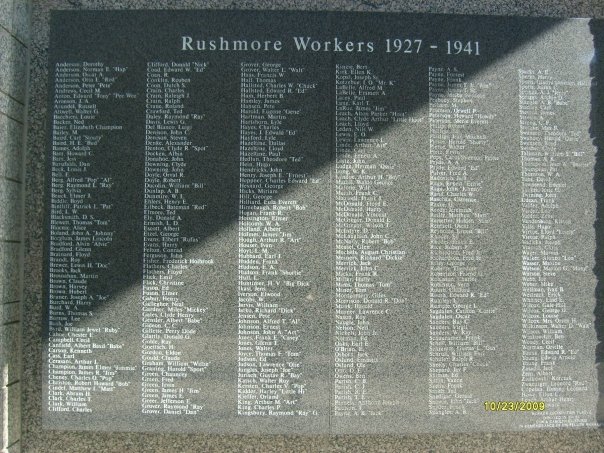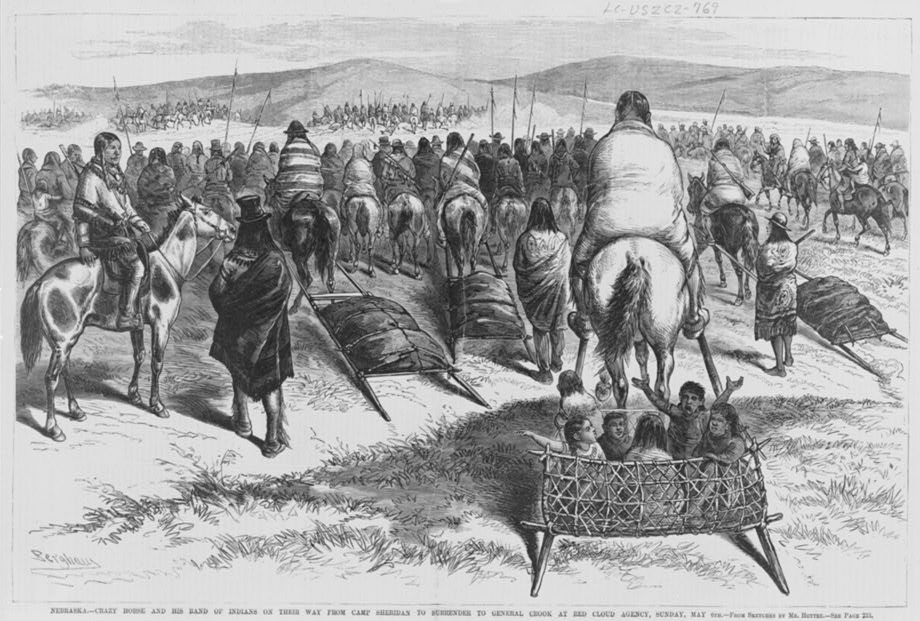|
Mount Rushmore National Memorial
Mount Rushmore National Memorial is a national memorial centered on a colossal sculpture carved into the granite face of Mount Rushmore (Lakota: ''Tȟuŋkášila Šákpe'', or Six Grandfathers) in the Black Hills near Keystone, South Dakota, United States. Sculptor Gutzon Borglum created the sculpture's design and oversaw the project's execution from 1927 to 1941 with the help of his son, Lincoln Borglum. The sculpture features the heads of four United States Presidents recommended by Borglum: George Washington (1732–1799), Thomas Jefferson (1743–1826), Theodore Roosevelt (1858–1919) and Abraham Lincoln (1809–1865). The four presidents were chosen to represent the nation's birth, growth, development and preservation, respectively. The memorial park covers and the mountain itself has an elevation of above sea level. ... [...More Info...] [...Related Items...] OR: [Wikipedia] [Google] [Baidu] |
Pennington County, South Dakota
Pennington County is a county in the U.S. state of South Dakota. As of the 2020 census, the population was 109,222, making it the second-most populous county in South Dakota. Its county seat is Rapid City. The county was created in 1875, and was organized in 1877. It is named for John L. Pennington, fifth Governor of Dakota Territory, who held office in 1875 when the county was formed. Pennington County is included in the Rapid City metropolitan statistical area. It is also the location of Mount Rushmore. History In 1874, US Army commander George A. Custer led a group into the Black Hills area. He and some of his officers climbed the crest now called Black Elk Peak, and made a toast to US General William S. Harney. They named the peak for Harney, and this name was used until 2016. This expedition reported that gold could be found in the Black Hills, which spurred a gold rush into the future county area. The mining settlements that sprang up were in violation of a treaty sign ... [...More Info...] [...Related Items...] OR: [Wikipedia] [Google] [Baidu] |
Lewis And Clark Expedition
The Lewis and Clark Expedition, also known as the Corps of Discovery Expedition, was the United States expedition to cross the newly acquired western portion of the country after the Louisiana Purchase. The Corps of Discovery was a select group of U.S. Army and civilian volunteers under the command of Captain Meriwether Lewis and his close friend Second Lieutenant William Clark. Clark and 30 members set out from Camp Dubois, Illinois, on May 14, 1804, met Lewis and ten other members of the group in St. Charles, Missouri, then went up the Missouri River. The expedition crossed the Continental Divide of the Americas near the Lemhi Pass, eventually coming to the Columbia River, and the Pacific Ocean in 1805. The return voyage began on March 23, 1806, at Fort Clatsop, Oregon, and ended on September 23 of the same year. President Thomas Jefferson commissioned the expedition shortly after the Louisiana Purchase in 1803 to explore and to map the newly acquired territory, to find a pr ... [...More Info...] [...Related Items...] OR: [Wikipedia] [Google] [Baidu] |
Black Elk
Heȟáka Sápa, commonly known as Black Elk (December 1, 1863 – August 19, 1950), was a ''wičháša wakȟáŋ'' ("medicine man, holy man") and ''heyoka'' of the Oglala Lakota people. He was a second cousin of the war leader Crazy Horse and fought with him in the Battle of Little Bighorn. He survived the Wounded Knee Massacre in 1890. He toured and performed in Europe as part of Buffalo Bill's Wild West. Black Elk is best known for his interviews with poet John Neihardt, where he discussed his religious views, visions, and events from his life. Neihardt published these in his book ''Black Elk Speaks'' in 1932. This book has since been published in numerous editions, most recently in 2008. Near the end of his life, he also spoke to American ethnologist Joseph Epes Brown for his 1947 book ''The Sacred Pipe''. There has been great interest in these works among diverse people interested in Native American religions, notably those in the pan-Indian movement. Black Elk converted t ... [...More Info...] [...Related Items...] OR: [Wikipedia] [Google] [Baidu] |
America's Best Idea
''The National Parks: America's Best Idea'' is a 2009 television documentary miniseries by director/producer Ken Burns and producer/writer Dayton Duncan which features the United States National Park system and traces the system's history.PBS To Air Ken Burns’s ''The National Parks: America's Best Idea''... a July 2008 press release from the website The series won two 2010 ; one for [...More Info...] [...Related Items...] OR: [Wikipedia] [Google] [Baidu] |
Sioux
The Sioux or Oceti Sakowin (; Dakota language, Dakota: Help:IPA, /otʃʰeːtʰi ʃakoːwĩ/) are groups of Native Americans in the United States, Native American tribes and First Nations in Canada, First Nations peoples in North America. The modern Sioux consist of two major divisions based on Siouan languages, language divisions: the Dakota people, Dakota and Lakota people, Lakota; collectively they are known as the Očhéthi Šakówiŋ ("Seven Council Fires"). The term "Sioux" is an exonym created from a French language, French transcription of the Ojibwe language, Ojibwe term "Nadouessioux", and can refer to any ethnic group within the Great Sioux Nation or to any of the nation's many language dialects. Before the 17th century, the Dakota people, Santee Dakota (; "Knife" also known as the Eastern Dakota) lived around Lake Superior with territories in present-day northern Minnesota and Wisconsin. They gathered wild rice, hunted woodland animals and used canoes to fish. Wars ... [...More Info...] [...Related Items...] OR: [Wikipedia] [Google] [Baidu] |
Treaty Of Fort Laramie (1868)
The Treaty of Fort Laramie (also the Sioux Treaty of 1868) is an agreement between the United States and the Oglala, Miniconjou, and Brulé bands of Lakota people, Yanktonai Dakota and Arapaho Nation, following the failure of the first Fort Laramie treaty, signed in 1851. The treaty is divided into 17 articles. It established the Great Sioux Reservation including ownership of the Black Hills, and set aside additional lands as "unceded Indian territory" in the areas of South Dakota, Wyoming, and Nebraska, and possibly Montana. It established that the US government would hold authority to punish not only white settlers who committed crimes against the tribes but also tribe members who committed crimes and were to be delivered to the government, rather than to face charges in tribal courts. It stipulated that the government would abandon forts along the Bozeman Trail and included a number of provisions designed to encourage a transition to farming and to move the tribes "cl ... [...More Info...] [...Related Items...] OR: [Wikipedia] [Google] [Baidu] |
American Art (journal)
''American Art'' is a journal publishing peer-reviewed innovative scholarship on the history of art and related visual culture. It critically engages with the material and conceptual conditions of art and provides a forum for the expanding field of American art history. It welcomes scholarship on the role played by art in the ongoing transnational and transcultural formation of America as a contested geography, identity, and idea. Committed to rigorous inquiry, the journal presents a range of approaches to the production and consumption of art. It is published by the University of Chicago Press The University of Chicago Press is the largest and one of the oldest university presses in the United States. It is operated by the University of Chicago and publishes a wide variety of academic titles, including ''The Chicago Manual of Style'', ... and was known until 1991 as ''Smithsonian Studies in American Art''. External links * Submission guidelines Publications established ... [...More Info...] [...Related Items...] OR: [Wikipedia] [Google] [Baidu] |
United States Senate
The United States Senate is the upper chamber of the United States Congress, with the House of Representatives being the lower chamber. Together they compose the national bicameral legislature of the United States. The composition and powers of the Senate are established by Article One of the United States Constitution. The Senate is composed of senators, each of whom represents a single state in its entirety. Each of the 50 states is equally represented by two senators who serve staggered terms of six years, for a total of 100 senators. The vice president of the United States serves as presiding officer and president of the Senate by virtue of that office, despite not being a senator, and has a vote only if the Senate is equally divided. In the vice president's absence, the president pro tempore, who is traditionally the senior member of the party holding a majority of seats, presides over the Senate. As the upper chamber of Congress, the Senate has several powers o ... [...More Info...] [...Related Items...] OR: [Wikipedia] [Google] [Baidu] |
Peter Norbeck
Peter Norbeck (August 27, 1870December 20, 1936) was an American politician from South Dakota. After serving two terms as the ninth Governor of South Dakota, Norbeck was elected to three consecutive terms as a United States Senator. Norbeck was the first native-born Governor of South Dakota to serve in office, and the first native-born U.S. Senator from South Dakota. (Norbeck was born in the portion of the Dakota Territory that would later become the state of South Dakota). He is best remembered as "Mount Rushmore's great political patron", for promoting the construction of the giant sculpture at Mount Rushmore and securing federal funding for it. Early life and education Norbeck was the oldest of six children born to immigrants George (born in Jämtland, Sweden) and Karen (Larsen) Norbeck, who was Norwegian. At the time of Norbeck's birth, his family was living in a dugout on the family's , located northeast of Vermillion, Dakota Territory. He attended the public schools and ... [...More Info...] [...Related Items...] OR: [Wikipedia] [Google] [Baidu] |
Crazy Horse
Crazy Horse ( lkt, Tȟašúŋke Witkó, italic=no, , ; 1840 – September 5, 1877) was a Lakota war leader of the Oglala band in the 19th century. He took up arms against the United States federal government to fight against encroachment by white American settlers on Native American territory and to preserve the traditional way of life of the Lakota people. His participation in several famous battles of the Black Hills War on the northern Great Plains, among them the Fetterman Fight in 1866, in which he acted as a decoy, and the Battle of the Little Bighorn in 1876, in which he led a war party to victory, earned him great respect from both his enemies and his own people. In September 1877, four months after surrendering to U.S. troops under General George Crook, Crazy Horse was fatally wounded by a bayonet-wielding military guard while allegedly resisting imprisonment at Camp Robinson in present-day Nebraska. He was honored by the U.S. Postal Service in 1982 with a 13¢ Great ... [...More Info...] [...Related Items...] OR: [Wikipedia] [Google] [Baidu] |
Buffalo Bill
William Frederick Cody (February 26, 1846January 10, 1917), known as "Buffalo Bill", was an American soldier, Bison hunting, bison hunter, and showman. He was born in Le Claire, Iowa, Le Claire, Iowa Territory (now the U.S. state of Iowa), but he lived for several years in his father's hometown in modern-day Mississauga, Ontario, Canada, before the family returned to the Midwest and settled in the Kansas Territory. Buffalo Bill started working at the age of eleven, after his father's death, and became a rider for the Pony Express at age 15. During the American Civil War, he served the Union from 1863 to the end of the war in 1865. Later he served as a civilian scout for the United States Army, U.S. Army during the Indian Wars, receiving the Medal of Honor in 1872. One of the most famous and well-known figures of the American Old West, Buffalo Bill's legend began to spread when he was only 23. Shortly thereafter he started performing in Wild West show, shows that displayed cowb ... [...More Info...] [...Related Items...] OR: [Wikipedia] [Google] [Baidu] |





%2C_Nebraska._Pawnee_reservation_and_relevant_Indian_territories.png)


